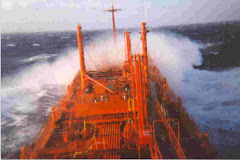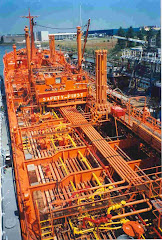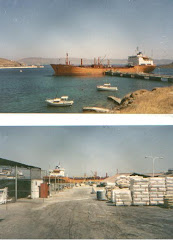DRYS's latest quarterly earnings report last week showed that the company closed FY 2008 with a massive US$ 361 mio loss. Very troubling was the US$ $700.46 mio non-cash impairment charge charge relating to the Ocean Rig acquisition as the main culprit behind the large net loss.
Despite previous press reports to the contrary, DRYS has not yet secured waivers for its term debt defaults and negotiations with senior debt lenders are still running. Their auditors expressed doubts about the company’s future in its annual report today. So far DRYS has succeeded to raise US$ 380 mio in their ongoing efforts to increase capital by ATM sales. There has been little cheer for DRYS since my last piece on a new contract for one of the oil rigs.
Like most dry bulk companies, DRYS is engulfed in a battle of attrition to deal with the massive debt accumulated in rapid asset expansion in the recent boom years. The Ocean Rig buy-out and addition rig purchases were the straw that broke the camel's back. Despite the healthy profits accumulate from the dry cargo boom years, this foray into off shore drilling overreached their company free cash flow potential and has now led to serious liquidity and loan/ asset coverage problems.
These setbacks raise again the looming possibility of sacrificing the Ocean Rig acquisition for needed cash to save the core company business. DRYS shares at the time of writing this article are down nearly 18%.
Please refer to my previous article on various future scenarios as well moral hazard issues
for this company.
Despite previous press reports to the contrary, DRYS has not yet secured waivers for its term debt defaults and negotiations with senior debt lenders are still running. Their auditors expressed doubts about the company’s future in its annual report today. So far DRYS has succeeded to raise US$ 380 mio in their ongoing efforts to increase capital by ATM sales. There has been little cheer for DRYS since my last piece on a new contract for one of the oil rigs.
Like most dry bulk companies, DRYS is engulfed in a battle of attrition to deal with the massive debt accumulated in rapid asset expansion in the recent boom years. The Ocean Rig buy-out and addition rig purchases were the straw that broke the camel's back. Despite the healthy profits accumulate from the dry cargo boom years, this foray into off shore drilling overreached their company free cash flow potential and has now led to serious liquidity and loan/ asset coverage problems.
These setbacks raise again the looming possibility of sacrificing the Ocean Rig acquisition for needed cash to save the core company business. DRYS shares at the time of writing this article are down nearly 18%.
Please refer to my previous article on various future scenarios as well moral hazard issues
for this company.








